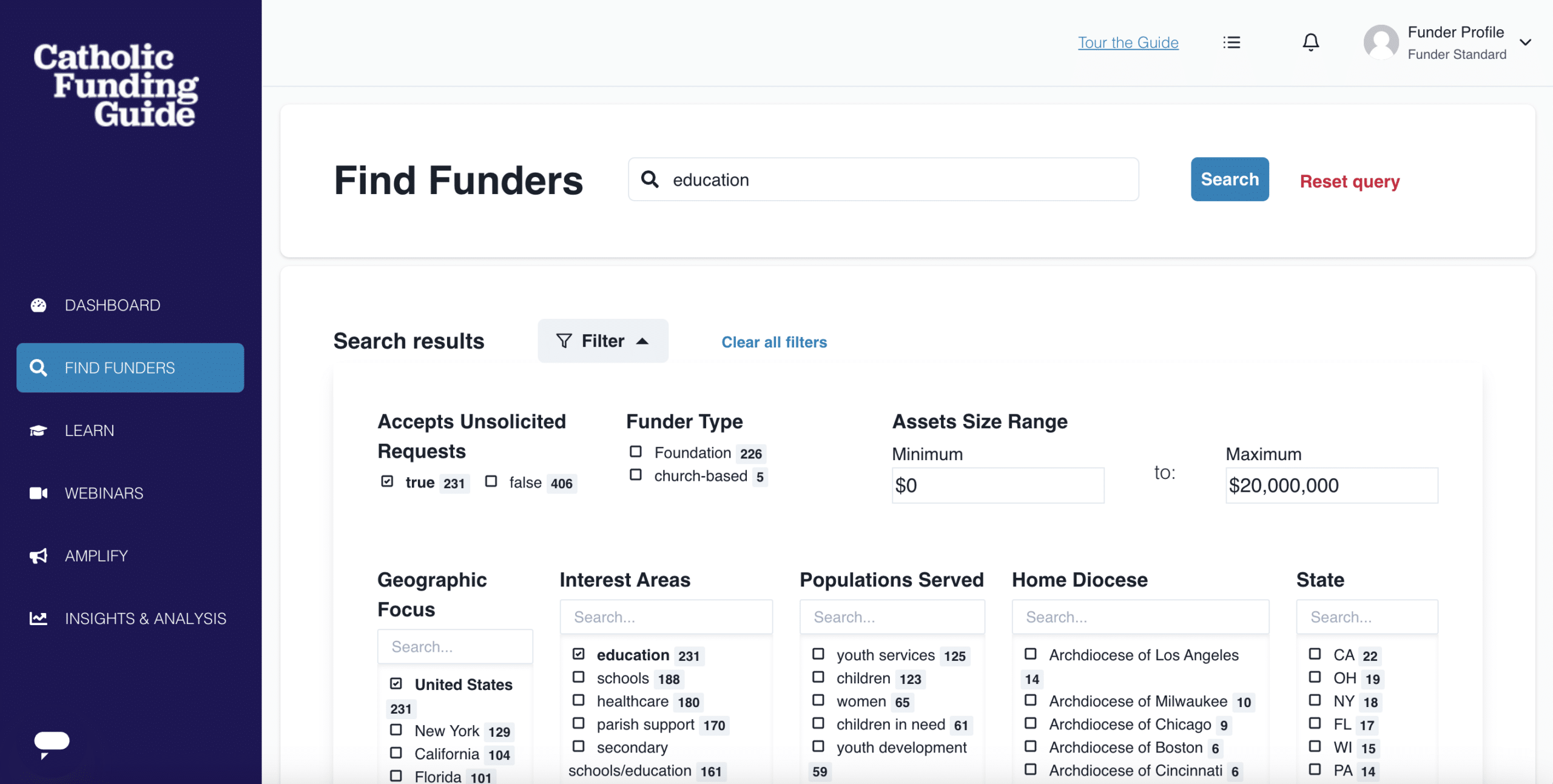This article by Jeri Eckhart Queenan, Devin Murphy, and Peter Grunert of The Bridgespan Group originally appeared in the March 23, 2021 issue of the Insights newsletter from Lake Institute on Faith & Giving.
When Catholic Charities DC (CCDC) fell on hard times, its board recruited an experienced leadership team to help keep its doors open to the community’s most vulnerable. “It was a tough time. Needs were rising. Resources were falling. There was a lot of dysfunction. The budget relied on public funds,” explains Monsignor John Enzler, hired as CCDC’s CEO in 2011.
Fortunately, philanthropic benefactors were willing to make two gifts totaling $6 million that gave Enzler’s team flexibility to map out a plan to cut unsustainable programs and reinvest in programs that were core to CCDC’s mission. The result: CCDC is financially strong and able to provide food, shelter, and educational services to over 140,000 individuals in the metropolitan DC area.
Philanthropy’s timely intervention buttressed a faith-inspired organization that provides critical services in one metro. Seeking to understand the broader role of these organizations in driving social change nationally, we set out to analyze novel data and interview field experts.
Our resulting article documents how faith-inspired nonprofits account for two out of every five dollars spent on safety net services across a sample of six representative US cities.
While their role in the social safety net is recognized by some funders, including government agencies, that perspective has not translated into funding from the largest institutional philanthropies. Among the 15 largest private foundations, faith-inspired human services nonprofits represent only 12 percent of safety net funding, much less than their 40 percent share of the sector.
Large institutional philanthropy’s discomfort with faith-inspired nonprofits is often grounded in the complicated historical relationship between faith traditions and many aspects of social justice. Though many faith traditions share a common concern with fighting poverty, some have also been a source of harm, trauma, and hardship. This complex history makes it hard for funders to discern which faith communities’ organizations are aligned with their equity values and impact objectives.
“We need to demystify faith-based organizations and close the funding gap, because they can be innovative, high-performing, and have a tremendous impact.”
Amy Goldman, CEO, GHR Foundation
Our research has identified three myths that leave impact on the table:
Myth #1—Secularism is the dominant frame for America.
Reality: Despite recent declines in religious affiliation, nearly three out of every four Americans remain religiously affiliated – with Black, Latinx, rural and low-income communities actively engaging in their faith at higher rates
Myth #2—Faith-inspired organizations are a small portion of the social sector.
Reality: Roughly a third of the 50 largest nonprofits in the country have a faith orientation. And, 40 percent of international nongovernmental organizations are faith-inspired.
Myth #3—Faith-inspired organizations are stodgy and lack innovation.
Reality: Many faith-inspired organizations are at the forefront of innovation in service delivery and the ability to meet the needs of the communities they serve.
Tactical Steps to Close the Gap
As we collectively look out on the crises of a global pandemic, our country’s racial reckoning, and increasing threats to democratic norms, it is imperative that we look for ways to deeply engage with the systems and institutions that motivate, convene, and establish a sense of community across the lives of millions in this country and billions worldwide. We suggest one way might be to build bridges across secular-anchored funding and faith-inspired impact. Here are a few thoughts on how to get started:
- View faith-inspired organizations as brokers of trust within communities. “As a means for intersecting with communities that are rooted in race and ethnicity, faith-inspired organizations that are governed, run, and accountable to the people they serve can be excellent partners for funders who wish to build authentic connections and partnerships with underrepresented communities,” says David Dodson, recently retired president of MDC, a catalyst for social change in the South.
- Extend trust through meaningful dialogue. Successfully engaging with these organizations hinges on trusting the roles they play in their communities, and embarking on a frank, mutual dialogue with faith-based actors about the funder’s motivations. Some leaders we spoke with cautioned anyone hoping to partner with congregational communities to center the communities, not themselves.
- Complement faith-inspired organizations by collaborating on solutions. “Churches are really key anchors in underserved communities,” says Kathryn Pitkin Derose, senior researcher at RAND Corporation, a policy think tank. “They excel at responding to critical needs, and they know those needs in their communities very intimately. When you start to combine efforts with churches, you can really have an important impact on the community as a whole.”
Jeri Eckhart Queenan and Devin Murphy are partners in The Bridgespan Group’s New York office, where Peter Grunert is a manager.




